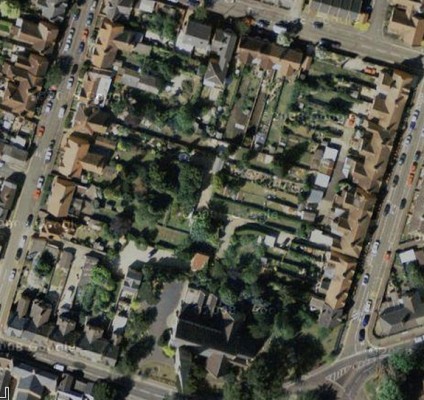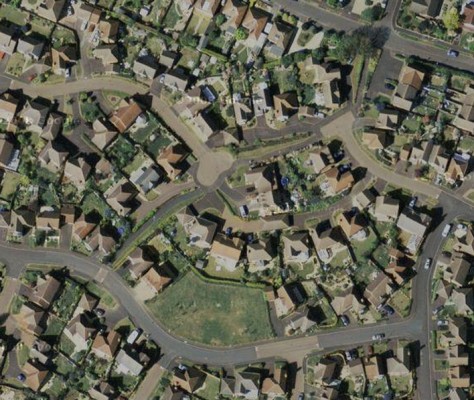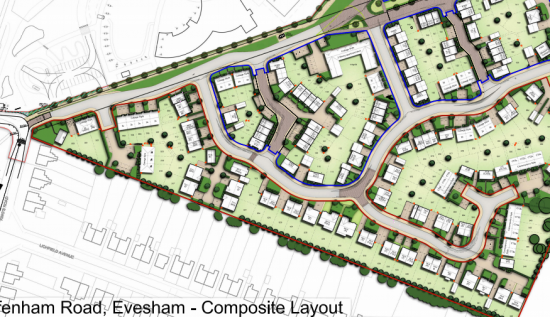That’s a contentious statement, of course. Planning applications and decisions always arouse a lot of feeling, on all sides. And some of the strongest feelings are found in those who don’t want anything to be built anywhere near them. Equally, the idea that we might even consider building on greenfield land is considered sacrilege in many quarters.
As a town councillor, I get to see plenty of planning applications. And, as we’re in an area with a strong demand for housing, many of those are large-scale applications by developers wanting to build new housing estates of up to several hundred homes.
I’m not denying that we need more houses. It’s entirely unrealistic, in my opinion, to argue against any form of development in this area. The real questions, as I see it, are “what do we build?” and “where do we build?”.
And I think that the planning system in most of the UK – including here in Evesham, and Wychavon as a whole – is asking these in the wrong order. We’re trying to decide where the builders should be allowed to build, and then inviting them to put forward their proposals as to what to build there. And, because the land has already been earmarked for potential development, it’s hard to turn down an application that meets the necessary criteria however suboptimal it may be in other respects.
Take, for example, one that we looked at this evening. Or, rather, decided not to look at this evening, because we’d been given just 6 hours notice that we’d need to look at it and no supporting documents had been provided to us. As a council, we, rightly in my opinion, decided that it’s unreasonable to expect us to make any sensible comments on something at that short notice. So we dumped it back on the district planning committee, along with a moan about the lack of notice. But, anyway, it’s an application for 502 new houses in an area off Offenham Road in Evesham.
This is an area which falls within the local area development plan, so sooner or later we’re going to get houses built there. And I don’t really have a problem with that.
What I do have a problem with is the poor design of the proposals. One of the biggest issues that have been raised by objectors is the amount of traffic that the new development will generate on Offenham Road. The difficulty for the developers is that they don’t really have anywhere else to go; the traffic has to access the estate somehow and there’s no other way for it to do so.
But the reason that’s an issue is because of the sheer size of the development. 502 houses is a lot. And it’s that many, because they’ll be densely packed. And that’s one of the worst aspects of many modern housing developments.
Here are a couple of aerial shots from Google. The first is a fairly traditional housing estate built on a grid system:
Note how, despite the fact that it looks fairly dense from the roadside, there’s a lot of space behind the houses. There are long gardens, and the overall appearance is fairly green.
By contrast, here’s a more recent housing estate, less than a mile away:
This is different. Although the houses themselves are larger, and are mostly detached (this is primarily an “executive” estate), the overall density is higher. There’s a lot less greenery, and what there is is mainly in communal areas like the open space in the bottom centre.
Now, here’s an extract from the application I mentioned above:
This is just a small corner of the plan, but it illustrates the problem. Look at the size of the gardens in the existing houses at the bottom (the section in monochrome), and compare them with the gardens on the new houses (in colour). Even the expensive houses in the new development (eg, those at the bottom right) will be built on smaller plots of land than much cheaper traditional stock (such as those mid-left, just below the “point” of the new development). The cheaper (aka “affordable”) housing in the new development will barely have anything bigger than a back yard.
I think this is bad. It’s bad for a number of reasons. For a start, there’s a huge amount of demand for houses with a decent sized garden. Families who want space for the children to play, for example, or the green-fingered who want to grow their own fruit and veg. In Evesham, the waiting list for allotments is about as large as the number of people who already have them. A lot of that pressure comes from people who simply don’t have the room to grow much beyond a tub of patio tomatoes at home.
Traditional low-density suburban housing estates are also a haven for wildlife. The sheer variety of different uses – lawns in one, then flower beds in the next, and vegetables next to that, for example – creates a varied habitat that supports a large number of birds and small mammals. By contrast, many of the “gardens” in more recent developments tend to be mainly patio and small, uniform lawns, which is far less wildlife friendly. The communal open spaces, while giving the impression of greenness from the roadside, tend towards a corporate monoculture designed for ease of maintenance rather than providing genuine environmental benefits.
And, of course, the more houses you cram into a smaller space, the more people you will have living in them and the more traffic they will generate when they drive to work, or the shops, or to wherever they go for leisure. Which is back to where we came in, with the traffic on Offenham Road. And, however much we may fervently wish it were otherwise, it’s entirely unrealistic to expect that anything other than an overwhelming majority of house buyers on these new developments will be dependent on the car.
So why are we doing it? Why are we encouraging the creation of new developments that are too tightly packed?
The reason is that we’ve got our priorities the wrong way round. What we currently do is allocate land for housing, and then invite developers to fill it. And they fill it with as many houses as they can get away with, because that’s what makes the most profit.
I’d like to see a sea change in planning policy. Rather than telling developers where they can build, I’d like to start by telling them what we want built and then let them come forward with proposals to meet that. And yes, if they can’t pack as many houses into smaller spaces as they can now, that is going to result in more land usage overall. It might even – quelle horreur – result in new developments extending outwards into greenfield sites.
But I think that’s OK. That’s how villages, towns and cities have grown organically in the past – outwards. I agree that there is a case for protecting some areas which have particular significance, and I also agree that towns and villages should retain space between them and not merge into one another. So Evesham should not be allowed to expand so far that it meets Badsey, for example, coming the other way. But there is plenty of space around Evesham – particularly to the south-west and north-east – where expansion could take place without coming anywhere near another town or village. We could usefully make a start by extending the by-pass clockwise from the Cheltenham Road junction to meet Pershore Road the other side of Hampton. That would reduce traffic through Hampton, and give a hook on which to hang a new development which extends Hampton to the south.
There’s a lot of space out there which could easily meet all our housing needs, if only we had the courage to use it. But instead, we’re compressing more and more housing into a fixed space, with predictably undesirable results. Some of our most important town centre open spaces are under threat, because of the need to shoehorn as many people as possible into a relatively limited space.
Evesham, and other market towns like it, did not grow up as a high-density urban settlement. Sure, it has some higher density sections, but these have always been balanced by open space and low density housing. The modern fad for prioritising in-fill over expansion is turning our historic market towns into mini-Manhattans surrounded by a sea of farmland. It’s time for that to change.



